The Aesthetics of Lens Selection
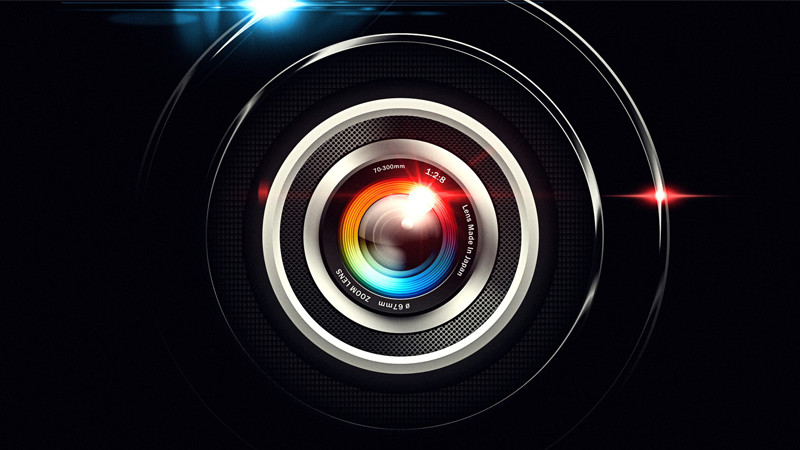
AESTHETICS OF LENS SELECTION FOR A NARRATIVE FILM
By Shailik Bhaumik
Lens is the eye of the camera system. All lenses perform the same function of focusing light onto the camera sensor and controlling the amount of light passing through with a physical aperture. Lenses come with AF (Auto-focus) with servo – assisted zoom controls, IS (Image Stabilization) and electronic apertures, fully manual controls, or something in-between. Lenses are built from a series of lens elements that worked together to produce sharp images with low distortion. Lenses are denoted by focal length and maximum apertures size. Technically a 50mm lens should be 50 mm long and a 300mm lens 300mm long. But due to the advanced design of the lens elements this is thankfully not the case. Understanding camera lenses will give you more control and a wide array of creative options. But choosing the right lens for your purpose can become a trade-off between cost, size, lens speed and image quality. With all lenses, though, the optical principals remain the same. In this article I have shared my personal experiences along with some tricks I have learnt from different books and articles. Here I have discussed about lens choice and suggest what types of lens you should use for a particular shot. If you are not a sort of director who is interested in lens choice, I still encourage you to get a basic grasp. Even if you consider yourself an “Actor’s Director”, remember that you can’t do the actor’s performances justice unless you know the best way to shoot them. It only takes a couple of hours with 35mm Digital SLR, or just using the zoom on HI-DEF camera to see what effect different lenses have. Although zoom is a single lens, you can think of it as many different lenses ranging from short to long. I’ll personally suggest not leaving the lens choice to your Director of Photography. Although your DP can do the job for you, there is no way you can accurately plan your shots unless you have an understanding of lenses. A random lens choice leads to a random shot and a potentially meaningless scene. In this article, I attempt to offer some useful tips to help you put together a lens package with a focus on narrative film.
NORMAL LENS

If you are forced to choose only one prime lens to have in your kit, then it would be a “normal” lens. A lens is considered normal when it produces images with a similar angle of view and perspective as human vision, thus resulting in a natural, true-to-life feel. Shorter and longer focal lengths result in wider or narrower angles of view, respectively, while also distorting perspective. So what focal length is considered normal? The answer isn’t necessarily a straightforward one, as it is determined by the size of the image sensor, as well as personal taste. On a full-frame 35mm-sized sensor, a 50mm lens is often considered normal, but there are many shooters who prefer a wider focal length, such as 35mm. On smaller-sized formats, such as Super 35 and Super 16, you’ll need a wider lens to get an angle of view equivalent to the full-frame normal lens. If you were to ask several directors and DPs what their normal and most-used lens is for motion-picture 35mm, you’ll get answers ranging, roughly, from 24mm to 50mm.
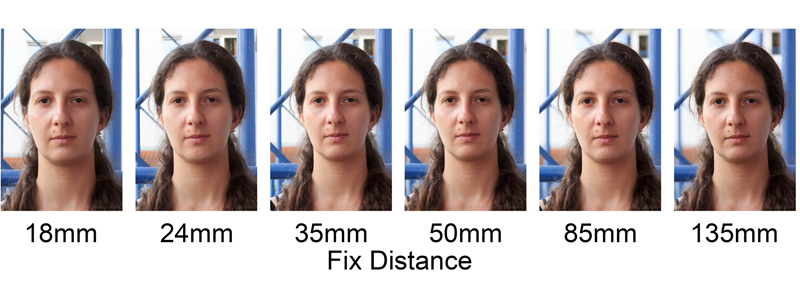
WHEN TO USE: The normal lens can be used for a variety of situations essentially, in any circumstance that can be easily shot without requiring the vastness of a wide angle shot or necessity for close-ups, a normal lens will work well. For example, when shooting a character in a Medium shot or multiple characters in a Medium long short, can be captured with a normal lens. Because this lens can be used in any circumstance with ease, it is often preferred for simple use. Available light is also a consideration for a normal lens. In any situation with lower light this lens is the best choice. The normal lens creates the "natural' look for a subject.
WIDE-ANGLE AND TELEPHOTO LENSES 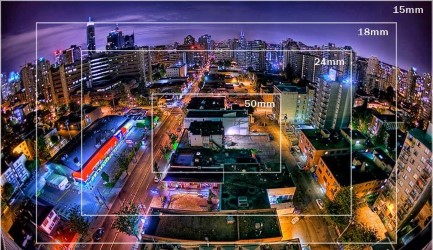
While you can shoot an entire project with just your normal prime lens, that isn’t often practical or desirable. You’ll want to put together at least a basic three-lens kit by adding a wider lens and a longer telephoto lens to go along with your normal lens. A three-lens kit is a pretty versatile package, and more often than not can get you through an entire shoot. Let’s quickly look at the benefits of wide-angle and telephoto lenses. A wide-angle lens is useful for exaggerating distance between subjects, to emphasize and separate a character in the foreground from the world behind him, or to give a room/location a sense of presence. It can also be used to create some interesting effects with close-ups, such as distorting an actor’s face, creating a sense of confusion or disorientation, or to give the lens a presence, where the audience feels the close proximity of the lens to the actor. Beyond affect, a wide-angle lens is also often required for practical reasons. Walk into a tight interior location or alley with only a normal or wide-normal lens on hand and you may not be able to get the master shot that the director wants. Not good. The wide-angle lens is also a great choice for Steadicam or other stabilization systems when following action. 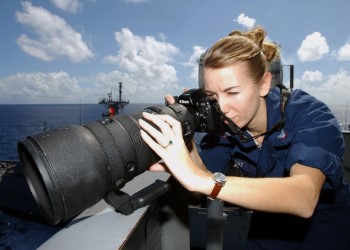
In contrast to wide-angle lenses, telephoto lenses have the effect of compressing distance and making the background appear closer to foreground subjects. Telephoto lenses also have a shallower apparent depth of field than a normal or wide-angle lens will have when matching framing and aperture, making them good at singling out an actor or object. The most common use of a telephoto lens in film production is for close-ups, as a slight telephoto effect is pleasing on the face by “flattening” or compressing facial features. *A common focal length for close-ups is 85mm, but the focal length can be shorter or longer based on personal preference and on what your normal lens is. So what would a three-lens kit look like? For full-frame 35mm, a common kit could be 24mm, 50mm, and 85mm. For Super 35 format, a three-lens kit could look more like this 18mm, 32mm, and 75mm. But, if I haven’t emphasized it enough, how wide and how long you want to go will come down to personal preference.
FAST LENSES 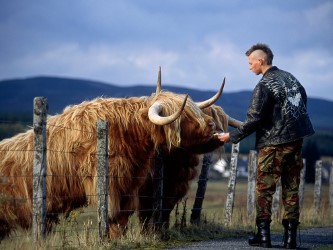
Once you know what focal length you want, you’ll want to consider the speed of the lens. A “fast” lens is one that has a wide maximum aperture, which is measured by a low f-stop number, such as 2.0, 1.8, and 1.4. So just how fast do you need to go? I’d recommend going as fast as you can afford. While the benefits of a fast lens will be obvious to many, I’ll quickly summarize. There are two main benefits of faster lenses. The first, and perhaps most important, is that the wider the aperture opening, the greater the amount of light that is passed through to the sensor. This allows you to shoot in more dimly lit settings without having to increase the ISO and potentially add unwanted image noise. The second main benefit of fast lenses is increased control over your depth of field. As the aperture opening increases, the depth of field becomes shallower, allowing you to you isolate your subject against an out-of-focus background. If you can, try to arrange lenses that have a similar maximum aperture, because you’ll need to be able to cut between them within a scene without having to increase or decrease the amount of light. At the very least, you’ll want your core lenses (wide, normal, telephoto) to offer a maximum aperture of f/2.8 or faster. That way, if your ultra-wide or longer telephoto lenses are a little slower, you still have a set of lenses that can cover a scene.
PICK ZOOM LENSES FOR THE RIGHT REASON

Zoom lenses offer some benefits. First of all, a zoom lens can, in theory, replace multiple prime lenses and eliminate the need for having to fill in gaps between focal lengths. You also don’t have to worry about changing lenses as often while shooting, which is particularly useful when a camera is mounted on a crane or in other setups where quick lens changes are difficult or impossible. One of the biggest downsides to zoom lenses is that they usually don’t match the image quality of a good prime lens at a given focal length. Zoom lenses tend to be slower than prime lenses, and if you want a high-quality cinema-calibre lens that is par focal (maintaining focus as you zoom) and features a relatively fast maximum aperture that is constant throughout the zoom range, then you’re going to have to drop a pretty penny. The lens will also be large and heavy, which might not benefit your production or setup. If you’re set on zoom lenses for your production, then you’ll probably want one wide-angle zoom, such as a 24-70mm (for full-frame cameras), and one telephoto zoom, such as a 70-200mm. This covers wide-angle to telephoto with only two lenses. You’ll probably want to supplement this with a fast normal lens, such as a 50mm f/1.4, and possibly also a fast portrait-length lens.
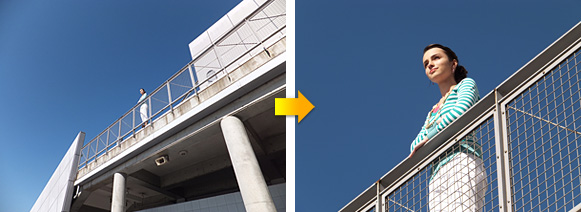
My suggestion on zoom lenses is this: make sure you’re choosing them for the right reasons. If you’re working on a run-and-gun-style production, on a larger-scale project with a lot of remote-operated camera setups then zoom lenses are a must. But if zoom lenses aren’t crucial to your production or shooting style, you’ll be better served with a nice set of prime lenses.
LENS SELECTION TRICKS FOR FEW SPECIFIC SCENES Fight Scenes: Long Lens Stunt

The most basic approach to shooting a violent punch is one of the most effective. The very first thrown in Fight Club was shot this way and used again throughout the film. The secret is to use a long lens. When you shoot with a long lens, distances between objects are artificially fore-shortened. In Fight Club, you can see that the long lens makes the distant wall look close to the actor, even though it’s a good distance away. This foreshortening also applies to the actors. Edward Norton punches to one side of Brad Pitt’s head, but it looks as though he makes contact. The illusion sells because Pitt reacts at the exact moment of supposed contact.
Chase Scenes: Long Lens Pan
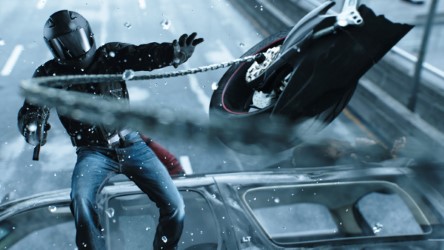
Most chases involve one person running away, and another following him. You can create a far more original scene of fear if you have your character run across the screen while the attacker runs straight towards camera. A long lens is used because as you pan with your actors running left to right across the screen, the scene of movement through the environment is greatly enhanced. This works best if there are trees or other obstacles around them and in front of them, flushing across the screen. Equally, the long lens foreshorten the distances, so that attackers appear to be horribly close, even though they are quite distant.
Chase Scenes: Passing Through Tight Spaces
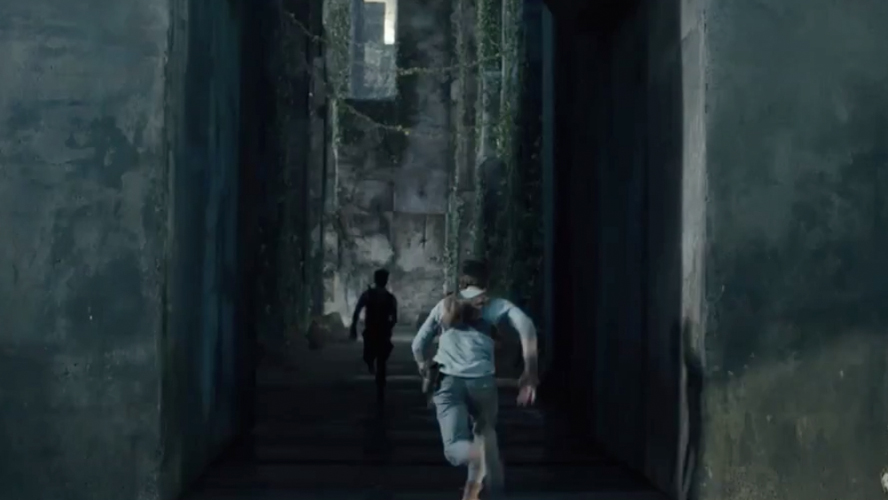
When somebody is being chased, you can raise the tension by having them pass through a tight space. When space begins to run out, it indicates to the audience that the scene is about to reach a conclusion, and that the pursuers are going to catch up. To shoot this you will need a location that is genuinely narrow. Use a short lens to exaggerate the characters apparent movement towards you. Although short lenses can make tight spaces look bigger, a short lens also shows more of a location and exaggerates character motion. In other words, the short lens fills the screen with more wall and makes the character rush artificially fast towards the camera. This combination of effects makes it look as though the character is moving into a tight space.
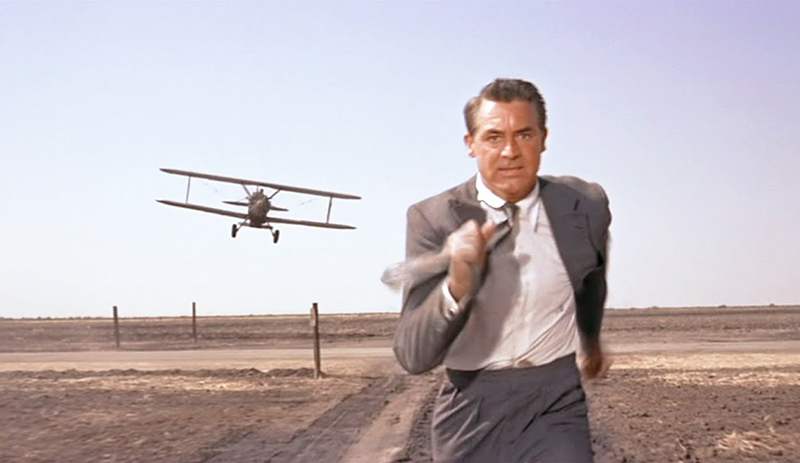
Chase Scenes: Through Open Spaces
During any chase scene, as seen above from Vertigo, it is wise to give your hero a goal at some point. There should be a house, doorway or car that he is trying to reach. At this moment the audience becomes even more tensed. When the destination is within sight, the thought of being caught is unbearable. The secret is to shoot this with two cameras moving across the set at different speed. You can create an optical illusion that makes it feel as though the hero is going to lose, without actually having the attacker catch up. When you shoot the hero, a longer lens can enhance the nightmare effect. It makes the goal look closer, but the goal doesn’t get much closer no matter how fast he runs. A shorter lens on the second camera makes the attacker’s speed seen almost superhuman as he approaches. In the conclusion I must admit that it’s not possible to discuss all the tricks in this single article. I have just given few examples here. Experimentation is still on and will be continued. I hope these techniques inspire you to be confident in your filmmaking. Whatever the pressure, no matter how tired you are, choose greatness.

Shailik Bhaumik is an award-winning filmmaker and entrepreneur. Known for his feature film ‘Dasein’, Shailik is the founder and Chairman of Human Lab Corporation, a Multinational Film Company whose mission it is to help Independent Filmmakers survive and thrive in this highly competitive industry. Shailik oversees worldwide operations including production, distribution, and marketing for HLC's live-action films, as well as films released under the HLC banner.


